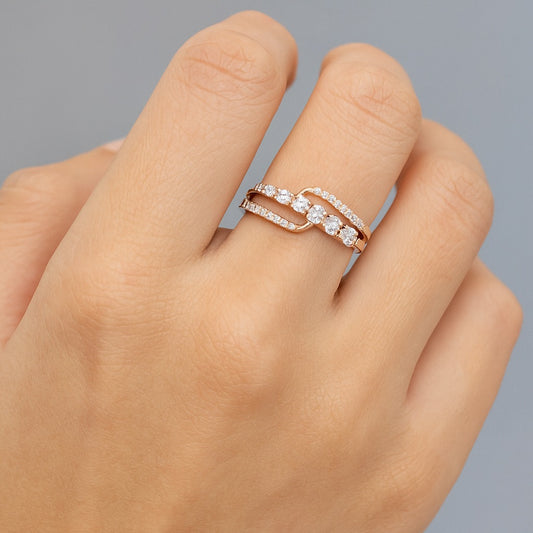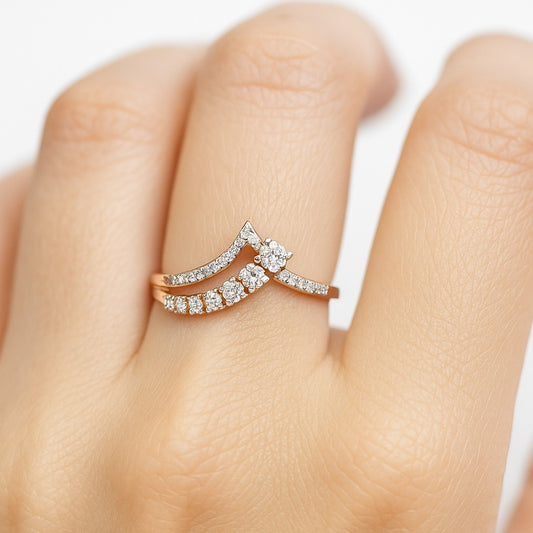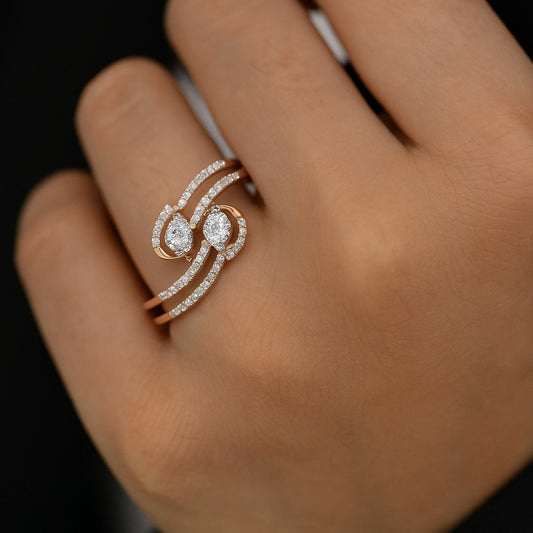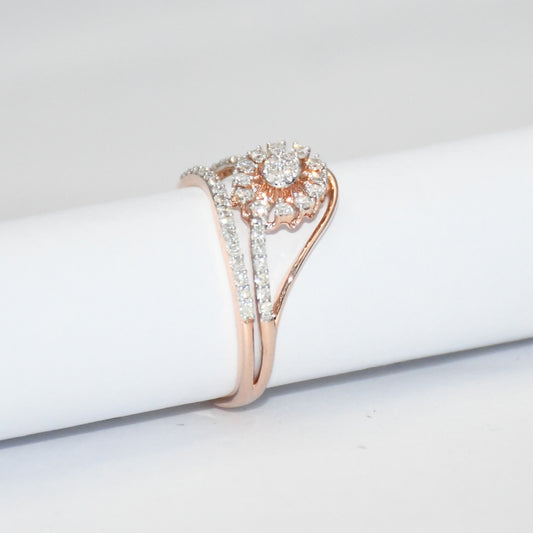Know All Differences Between Lab Grown and Natural Diamonds: A Detailed Guide
Share

Diamonds have always been a symbol of economic status, love, and strength. They have adorned crowns, engagement rings, and jewelry collections for decades. But in today’s world, when selecting diamonds, people face a unique dilemma: should they opt for a real diamond or a lab grown diamond? Both types have their charm, value, and importance, but understanding their differences is necessary before making a purchase. In this detailed guide, we will explore the key differences between lab grown diamonds and real diamonds to help you make a smart decision.
What Are Natural Diamonds
Natural diamonds were formed deep within the Earth over millions of years under extreme temperatures and pressures. They are mined from the Earth, often in countries like South Africa, Russia, and Canada. The natural formation process gives these diamonds their rare and unique features. Because they are made over such a long time, each natural diamond carries a story that is unique and priceless.
Natural diamonds are frequently admired not just for their shine but also for their past and place of origin. Collectors and enthusiasts are willing to pay higher prices for natural diamond jewelry because they are considered as rare and valuable. However, finding natural diamonds can have significant environmental and social effects, including land damage, ecology impact, and labor issues.
What Are Lab Grown Diamonds
Lab grown diamonds, also known as synthetic diamonds, are made in controlled lab environments that recreate the natural processes of diamond formation. Using modern technology, these diamonds are made from carbon under high pressure and high temperature. The result is a diamond that is chemically, physically, and visually similar to a real diamond.
Lab grown diamonds offer several benefits over natural diamonds. They are often more cheap, allowing buyers to get larger or higher-quality stones for the same budget. Additionally, they are considered more ethical and environmentally friendly since they avoid the issues that come with mining.
Physical and Chemical Composition
One of the most interesting things about diamonds is that lab grown diamonds and natural diamonds share the exact same chemical properties. Both are made totally of carbon and show similar hardness, brightness, and refractive qualities.
However, lab grown diamonds can sometimes have small details that are slightly different from real diamonds, which can be identified only through specialized tools. These differences do not affect the beauty or stability of the diamond but can help gemologists identify their origin.
Visual Differences
To the naked eye, lab grown diamonds and real diamonds are very similar. Both can shine clearly and contain the same brightness and color. In fact, many lab grown diamonds are flawless because their controlled growth environment reduces the natural imperfections that occur in found diamonds.
Natural diamonds, on the other hand, may have spots and small flaws that tell a story of their true journey These flaws are sometimes treasured as marks of trustworthiness and uniqueness.
Cost Comparison
One of the most important differences between lab grown diamonds and real diamonds is price. Lab grown diamonds are usually 20 to 40 percent less expensive than their natural versions of the same size and quality. This price difference allows buyers to spend in bigger stones or higher-quality cuts without breaking the bank.
Natural diamonds are more expensive due to their rarity and the costs related with mining and authorization. For many people, having a real diamond is seen as an investment that may hold or grow its value over time.
Environmental and Ethical Impact
Environmental issues are becoming increasingly important to customers. Mining natural diamonds can lead to harm to ecosystems, land pollution, and large carbon emissions. Additionally, there have been social problems related to work policies and conflict diamonds in certain places.
Lab grown diamonds, by contrast, have a much smaller global effect. They require less energy and water than mining activities, and the work involved is highly controlled and responsible. For buyers who value environment, lab made diamonds present a great choice.
Certification and Quality Assurance
Both lab grown diamonds and natural diamonds come with certificates from reputable gemological laboratories. These papers provide details about the diamond's size, color, clarity, and cut. For real diamonds, licenses often come from organizations like GIA, IGI, or AGS. Lab grown diamonds may also be verified by the same institutions, ensuring that buyers know exactly what they are buying.
Having certification is important whether you choose lab grown diamond jewelry or natural diamond jewelry. It offers authenticity, transparency, and trust in what you are buying.
Popularity and Market Trends
The market for lab made diamonds has grown rapidly in recent years. Younger buyers, in particular, get attracted to them because they contain beauty, affordability, and social production. Celebrities and fashion icons are increasingly showing lab grown diamond jewelry, helping to normalize and promote them.
Natural diamonds, however, continue to keep their status. They are often seen as family pieces or long-term investments, and many people prefer the traditional benefits of having something that has taken millions of years to make.
Choosing Between Lab Grown and Natural Diamonds
Deciding between lab grown diamonds and real diamonds varies on personal choices, budgets, and values. If you value longevity, cost, and ethical sources, lab grown diamonds may be the right choice. On the other hand, if you value rare, earnings potential, and the historical importance of a natural gem, natural diamonds could be more appealing.
It is also worth considering the type of jewelry you are buying. Lab grown diamond jewelry is excellent for engagement rings, necklaces, and trendy pieces that you want to wear every day without thinking about cost. Natural diamond jewelry might be better for investment pieces or gifts meant to be passed down through generations.
Myths and Misconceptions
There are several myths about lab made diamonds. One common myth is that they are fake or less valued. In fact, lab grown diamonds are genuine diamonds, similar in every chemical and physical aspect to natural ones. Another myth is that they are lesser in beauty, which is also wrong because many lab grown diamonds are perfect and can be of higher quality than real stones.
Natural diamonds also face myths, especially regarding social issues. While many mines now follow high ethical standards, certain regions still have problems with conflict diamonds. Being a smart buyer is important in both cases.
Conclusion
Both lab made diamonds and natural diamonds have unique benefits and features. Natural diamonds are prized for their rarity, history, and investing value, while lab grown diamonds are loved for their cost, ethical production, and environmental friendliness. Understanding the differences between these two types of diamonds allows buyers to make a decision that fits with their values, price, and personal choice.
Whether you choose a sparkling real diamond or an artificially created lab grown diamond, the right diamond can become a timeless symbol of beauty and love. When buying, make sure to consider authorization, quality, and your own interests. By doing so, you can safely find a piece that you will love for years to come.
In today’s world, choices like lab grown diamond jewelry and natural diamond jewelry allow everyone to find the right piece without compromise on quality, ethics, or style. Ultimately, the choice is not just about the diamond itself but about the story you want it to tell.
So, don't wait to find your perfect sparkle, check out VDS Jewels diamond jewelry collection with both lab grown and natural diamonds and pick the one thats just for you.








